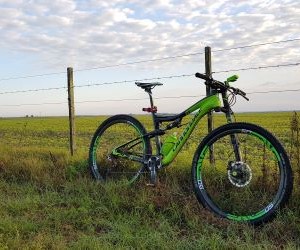Learn how to deal with punctures on long rides with prevention tips, repair techniques, and smart gear choices to keep rolling without stress.
HOW DO I PLAN A CYCLING VACATION?
Planning a cycling vacation blends the joy of travel with the challenge of adventure. Whether you’re chasing alpine passes, coastal routes, or gravel backroads, success depends on smart preparation. This article explores how to choose the right destination, prepare gear, arrange logistics, and maximize your time in the saddle. From solo escapes to guided tours, these insights help you craft a trip that balances riding, relaxation, and unforgettable experiences.

Choosing your destination
The foundation of any cycling vacation is destination selection. Your choice determines terrain, climate, cultural experiences, and overall vibe of the trip. A poorly matched location can turn dream rides into logistical headaches, so weigh your options carefully.
Match routes to your fitness
If you’re an endurance rider, destinations like the French Alps, Italian Dolomites, or Colorado Rockies deliver epic climbs. For casual riders, flatter regions such as the Netherlands or rail-trail networks in the U.S. provide accessible beauty without extreme difficulty.
Weather and timing
Climate matters. Avoid Alpine trips in winter unless you’re into ski-bike hybrids. Spring and summer are prime in Europe, while autumn offers perfect gravel conditions in North America. Research seasonal weather before booking.
Cultural and logistical factors
A cycling vacation isn’t just about pedaling. Consider the culture, food, and accessibility of each destination. Proximity to airports, bike rental options, and language barriers all affect ease of travel.
Alpine climbs for seasoned cyclists
Flat trails and scenic coasts for beginners
Seasonal timing to avoid weather extremes
Cultural perks like cuisine and history
The right destination aligns with your goals, fitness, and travel style. Get this step right, and everything else flows smoothly.
Preparing gear and logistics
With destination chosen, attention shifts to preparation. Gear readiness and travel logistics can make or break a cycling vacation. Unlike regular travel, bikes add complexity that requires foresight.
Bike transport and rentals
Decide whether to bring your own bike or rent locally. Bringing your own ensures familiarity but involves airline fees and packing stress. Rentals save hassle and can offer high-end models, but availability varies by destination.
Essential gear checklist
Beyond the bike, pack essentials: helmet, shoes, pedals, repair kit, and layered clothing. Weather can change quickly, so waterproof jackets and thermal layers are must-haves. Don’t forget travel adapters for charging electronics.
Accommodation and route planning
Cycling-friendly accommodations, like hotels with secure bike storage, simplify logistics. Plan routes in advance using tools like Komoot or Strava, but allow flexibility for detours. Knowing where bike shops are located along the route is a lifesaver.
Decide between bringing or renting bikes
Pack layered, weatherproof gear
Choose bike-friendly lodging
Map routes and locate repair shops
Preparation is about reducing stress. The fewer surprises you face, the more energy you’ll have to enjoy the rides themselves.
Maximizing your experience
A cycling vacation should balance adventure with enjoyment. Once the basics are covered, focus on making the most of every ride and moment off the bike.
Structured vs. flexible riding
Some riders thrive on strict itineraries; others prefer spontaneity. Strike a balance: schedule key rides you don’t want to miss, but leave room for weather changes or local recommendations. Flexibility often leads to unexpected highlights.
Nutrition and recovery
Fueling becomes more important when riding daily. Sample local cuisine but stay mindful of energy needs. Post-ride recovery with proper hydration, stretching, and rest ensures you can perform day after day.
Adding cultural value
Don’t let cycling dominate every waking hour. Blend in sightseeing, food tours, or local festivals. These experiences enrich the trip, making it memorable beyond the bike.
Balance planned routes with flexibility
Prioritize nutrition and daily recovery
Include cultural activities off the bike
Document the trip with photos or journals
In the end, a cycling vacation is about stories as much as kilometers. Planning well gives structure, but leaving space for serendipity ensures lasting memories. That’s how you turn a cycling trip into a true adventure.
YOU MAY ALSO BE INTERESTED






